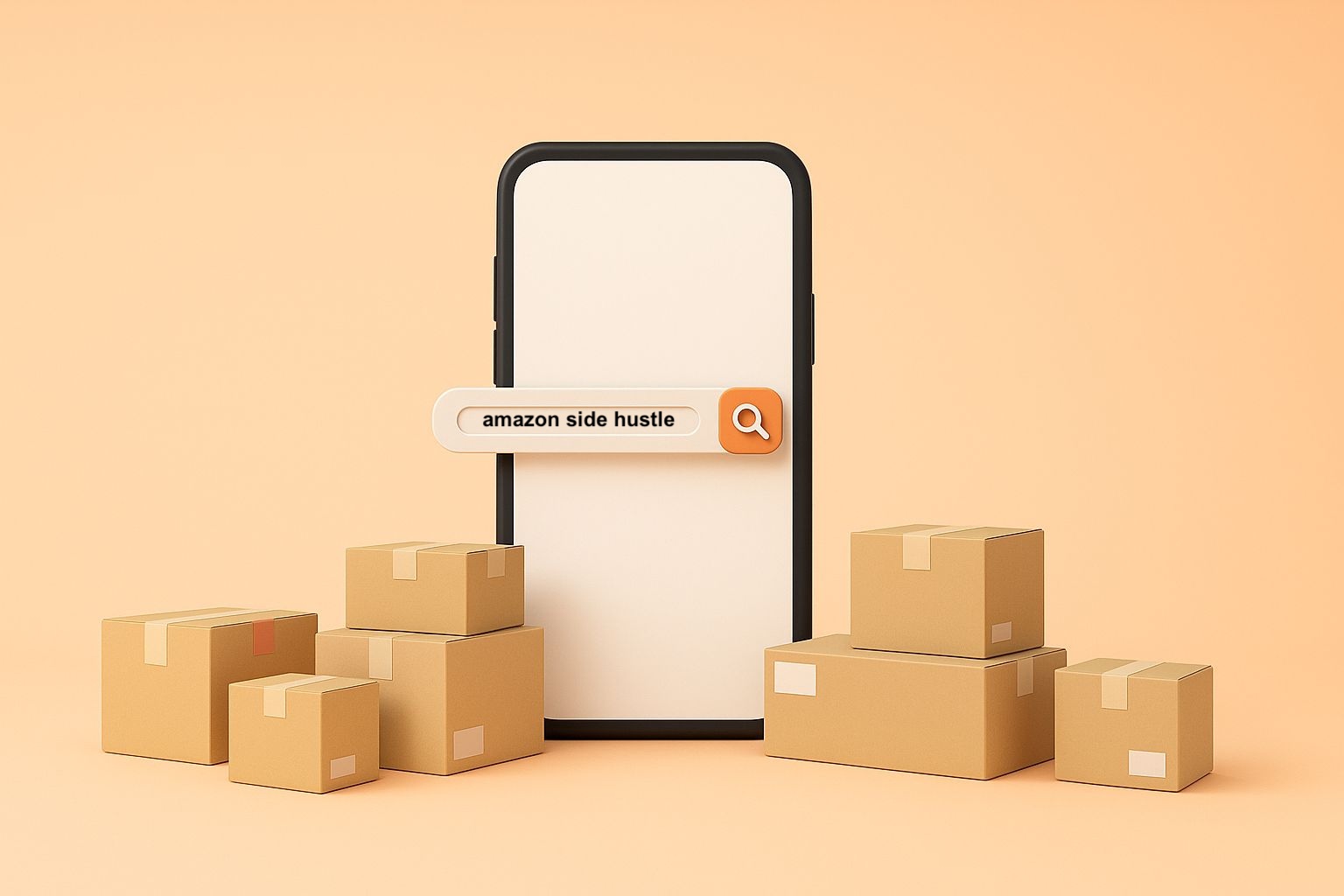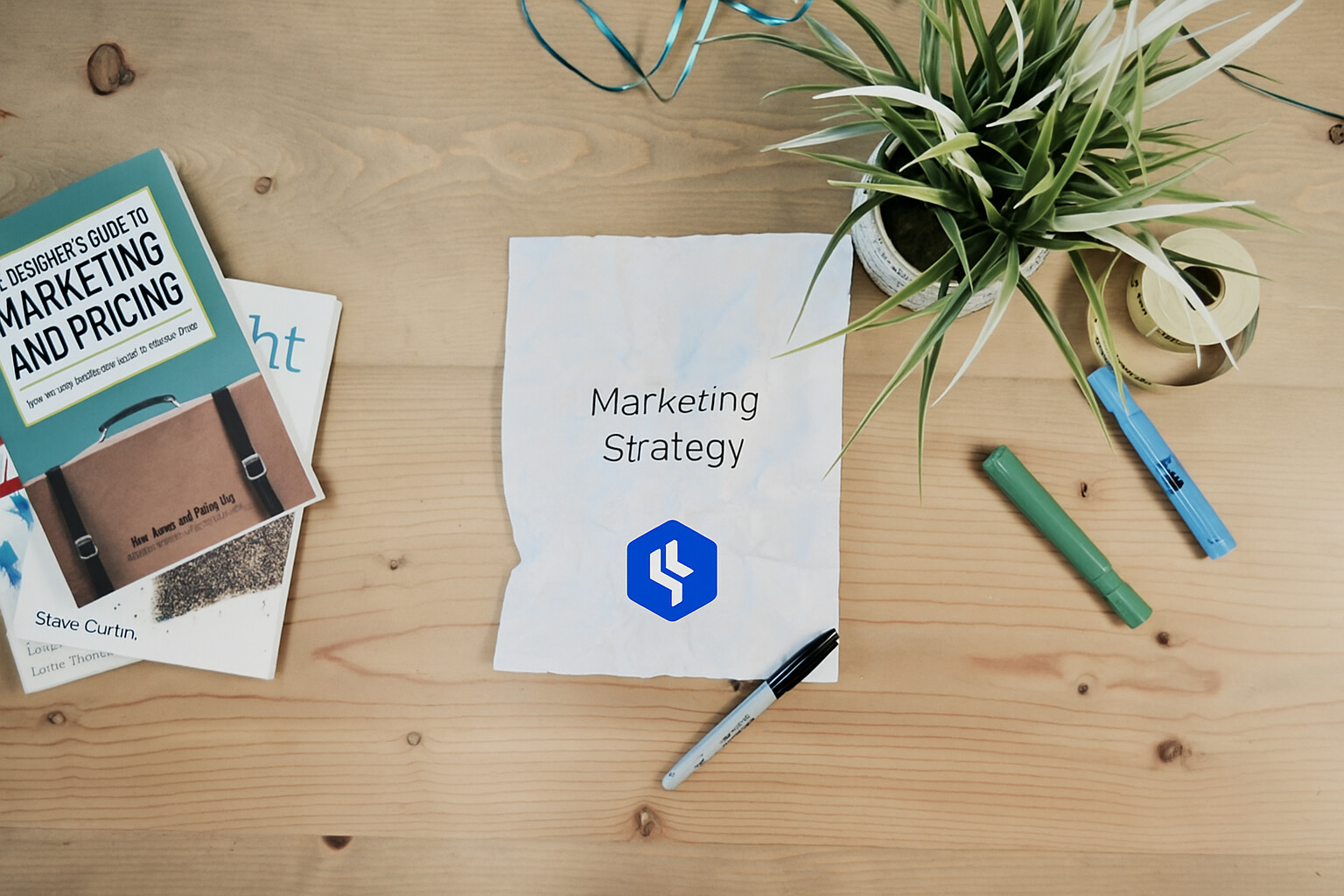How to Sell On Amazon: 5 Steps Every Seller Must Take

Are you trying to figure out how to sell on Amazon without a huge investment on your part? Although the Amazon seller environment is quite competitive, there are still many opportunities to be successful, even if you operate on a smaller budget. The flexibility Amazon offers lets you choose where and when you work, whether from the comfort of your cozy home or a tropical beach in a different part of the world. With the right approach and tools, a successful e-commerce business can be created.
Many people believe that you need a big amount of money to start an Amazon business, but that is definitely not true in every case. Choosing the right products and using Amazon FBA for fulfillment could get you started with less than 1000$, it’s all about the right strategy.
How to Become a Seller on Amazon
Follow the steps below to become an Amazon seller:
#1 Make a Business Plan First
Before you learn how to sell items on Amazon, you must have a strategy in place to make sure everything is going according to schedule. Your company mission, market analysis, goods and services, marketing and sales strategy, financial plan, etc. should all be included in a business plan.
You need to be aware of a number of things. You must conduct market research, examine trends, learn about your rivals, choose the types of things you want to offer, and determine how much you are willing to spend on product sourcing, marketing, and promotion.
#2 Identify Your Niche
To succeed in selling on Amazon, you have to identify a lucrative niche. Conduct market research to locate relevant, trendy, and competitive items that relate to your interests. We truly believe it’s easier to work within the niche that looks appealing to you and when you are well aware of the products that you sell.
Learn about the current product trends and research their emotional effect, usefulness, visibility, and recognition.
To make it popular on the market, try to identify the selling point or develop a brand-new selling sector.
When it comes to e-commerce strategies on how to sell on Amazon, first decide if you want to offer wholesale items, private label products, or both before you can begin looking for a product. Take a look at the difference:
Wholesale Selling
What it is: In wholesale selling, you buy products in bulk from manufacturers or authorized distributors and resell them at a higher price. These products are usually well-known brands.
Pros:
Cons:
Best For: Wholesale is a good idea for sellers who want to start quickly with less risk, and don’t mind competing for price. It’s a great option for beginners or anyone looking for a simpler, lower-effort approach to selling.
Private Label Selling
What it is: With private label selling, you take generic products or develop your own, (re)brand them with your logo, and create a unique product line under your own brand.
Pros:
Cons:
Best For: Private label is ideal for those who want to build a unique brand and are ready to put in the time and effort into developing and marketing their products. It’s a smart choice for people seeking higher rewards and long-term growth, as long as they are prepared for added risks and responsibilities.

#3 Conduct Market Research
Once you’ve identified your niche, you need to do market research to confirm it. Observe the sales of your competitors over time. You’ll get a more accurate picture of the market, specialized area, or market segment by monitoring your competition.
Another suggestion is to conduct a study or speak with a number of suppliers or customers to learn how they feel about the items.
After you’ve successfully identified your niche, market research will help you confirm if it’s effective and profitable.
#4 Find Your Product Suppliers
When you learn how to sell with Amazon, pay specific attention to how to choose a product.
Finding your product supplier comes after choosing your niche. Find information about suppliers on AliExpress, Alibaba, and other B2B marketplaces. If you can, get their name, address, and any other relevant information.
Additionally, conduct a Google search or make contacts with providers at trade exhibitions. You may communicate briefly with the provider and learn more about their products during trade events. To locate a supplier based on industry distribution, visit suppliers.
Communication is the key. Get in touch with the suppliers and try to understand if they are good enough to cooperate with them. Learn about the sample items’ prices, minimum order quantities (MOQ), order limits, product qualities, shipping costs, and other aspects that you find important and relevant for your business. Order samples to check the product’s quality. Before choosing your supplier, check the goods personally or use qualified quality inspectors.
Also, don’t forget to determine the terms and payment choices for your quote. Choose the best solution for you by limiting your selections in accordance with your needs.
#5 Open a Seller Account on Amazon
Individual and professional accounts offer different pricing structures. The individual account has no monthly fee but applies a $1 fee for each item sold. In comparison, the professional account requires a monthly subscription of $39.99. A good strategy is to begin with an individual account and upgrade to a professional account once you’re selling more than 40 items each month.
Go to this webpage to see how to open a seller account on Amazon step by step.
Fulfillment by Amazon
The more preferred choice among sellers is FBA. The selling process is made increasingly simpler. However, this comes at a price. The description makes it clear that Amazon handles the majority of the logistics. This is a fantastic way to expand your business rapidly, but if you’re not careful, storage costs might ruin the fun.
Amazon has launched its FBA service to meet the growing demands of the sellers. With the help of this service, merchants may use the platform’s vast consumer base and distribution network to realize their business goals. It’s the most common platform option for shops.
FBA, or “Fulfillment by Amazon,” refers to the process through which Amazon stores your items in its inventory, processes your orders, and provides customer assistance. You must register for an Amazon seller account and add FBA to your account in order to use this service. It’s important that you set up your company in accordance with the guidelines.
The FBA is summarized as follows:
Note: FBA-fulfilled goods are eligible for Amazon Prime. Sales can increase as a result.
Fulfillment by Merchant
Let’s examine the alternative, which is to pack and send the item yourself as an Amazon individual seller. In this scenario, you will be responsible for managing, storing, and sending your goods when an order comes in. If individual sellers are processing orders through FBM, they will also be in charge of customer care and product returns. It takes a lot of labor, and shipping fees are frequently more expensive than with FBA. There is an advantage: there are no storage expenses.
Get Positive Feedback From Customers
Without credibility, not many people will dare to buy your product. As you might have guessed, reviews play a crucial role when it comes to building trust with your clients. Shoppers have to choose between sellers who offer the same type of product. And the preference will be given to that particular seller with more positive reviews.
Moreover, a product listing’s performance in an Amazon search is greatly influenced by the number of reviews and the product’s average customer rating. Therefore, having a lot of favorable reviews helps a product rank well, which is crucial for the success of its sales.
Read more about how to get positive reviews on Amazon in this article.
Optimize Prices
If you’re still learning how to sell on Amazon, you’ll likely realize that price optimization is a very important step in your journey.
For Amazon sellers, pricing is more than just listing a product – it’s about finding a good balance between competitiveness and profitability. Your total price, including delivery, plays a big role in securing the Buy Box. If your pricing is competitive yet profitable, you’re already ahead of the competition.
That’s where repricing comes into play. Repricing is the process of adjusting your prices based on market conditions, competitor prices, and demand. Doing this manually is a very time-consuming task, which is why so many sellers use automated repricing tools. An Amazon repricer software continuously tracks market trends and competitor moves, making adjustments that keep you in the lead. Basic repricing tools stick to fixed pricing rules, but dynamic repricers are developed to react in real time to keep up with market conditions, helping you maximize both your sales and profits.
Final Thoughts
Now you know how to sell your products on Amazon. In sum, selling on Amazon sounds like the perfect option for those who want to escape a 9-5 job and earn their money on their terms. Automating processes like your pricing strategies, not only saves you money and nerves, but is also the driver capable of taking your Amazon business to the next level. Get in touch with us to learn more about the SELLERLOGIC Repricer and how to boost sales with it. Click the banner below.
FAQs
Amazon fees vary by plan and fees. Individual Plan is $0.99 per item sold, Professional Plan is $39.99 per month. Additional fees are referral fees (8-15%), FBA fees (if using Fulfillment by Amazon), and storage fees for inventory management.
You can sell on Amazon without holding inventory using dropshipping, Amazon FBA (Fulfillment by Amazon), or print-on-demand. Here’s how:
1. Dropshipping – List products from a supplier on Amazon. When a customer orders, the supplier ships directly to them.
2. Amazon FBA – Source products from a manufacturer and ship them to Amazon’s fulfillment centers. Amazon handles storage, shipping and customer service.
3. Print-on-Demand – Sell custom designs on items like t-shirts or mugs through Amazon Merch on Demand. Amazon prints and ships after each sale.
To sell on Amazon, create a seller account, choose a selling plan, and list your products. Choose Fulfillment by Amazon (FBA) or Fulfillment by Merchant (FBM). Optimize listings with keywords and images, set competitive prices and promote your products to get buyers and sales.
1. Create a Seller Account – Sign up on Amazon Seller Central.
2. Choose a Selling Plan – Individual ($0.99 per item) or Professional ($39.99/month).
3. List Your Product – Add product details, images, and pricing.
4. Choose Fulfillment – FBA (Amazon handles shipping) or FBM (you handle shipping).
5. Optimize & Sell – Use keywords, run ads, and manage pricing to attract buyers.
Image credits in order of appearance: © ANIRUDH – Unsplash / © Luke Heibert – Unsplash






